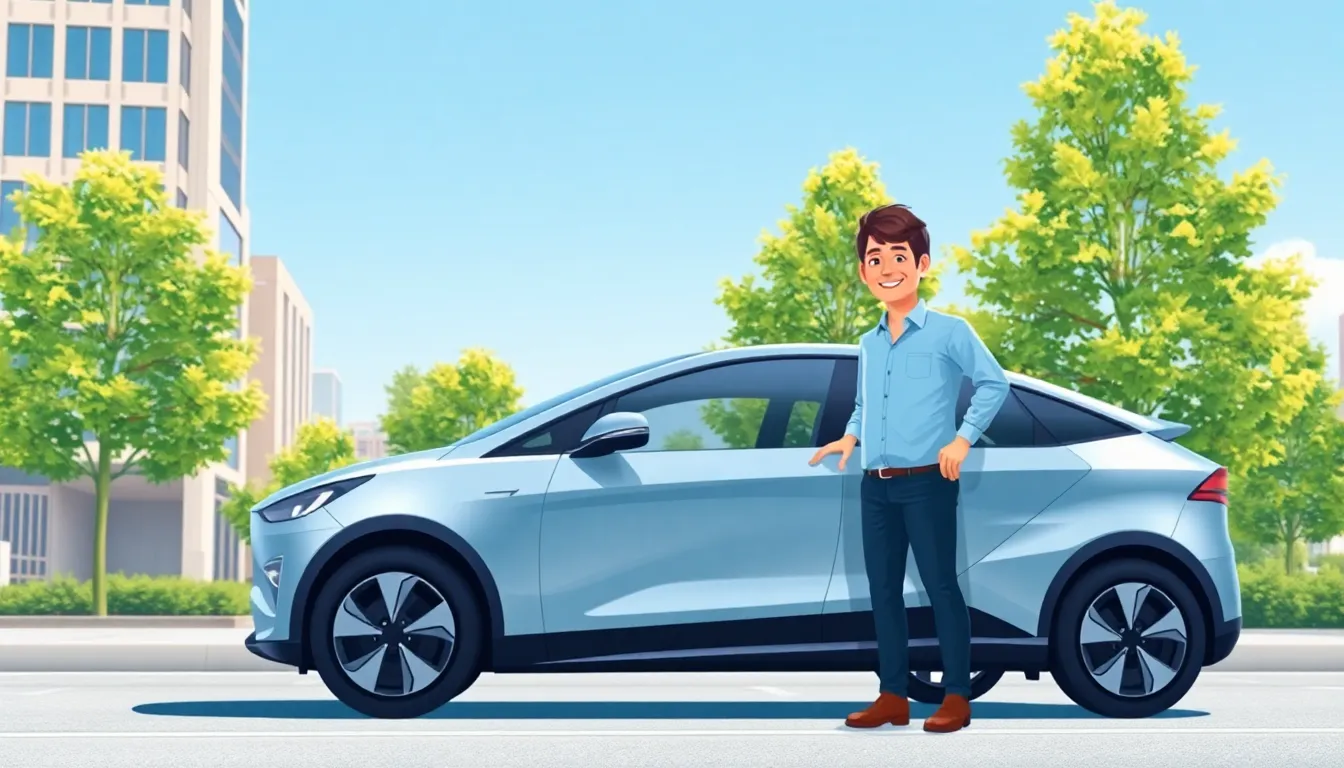Amped electric vehicles are revolutionizing the way we think about transportation. Imagine zipping through traffic with the quiet hum of an electric engine, leaving gas guzzlers in the dust. These eco-friendly rides aren’t just about saving the planet; they’re about embracing a future where power meets performance.
Table of Contents
ToggleOverview of Amped Electric Vehicles
Amped electric vehicles mark a significant advancement in the automotive industry. These vehicles offer superior performance capabilities compared to traditional gas-powered alternatives. Their electric powertrains deliver instant torque, resulting in quick acceleration and a responsive driving experience.
Environmental benefits accompany the transition to amped electric vehicles. They produce zero tailpipe emissions, aligning with global efforts to reduce air pollution. Cost savings add another appeal, as owners enjoy lower fuel and maintenance expenses.
Battery technology plays a crucial role in the performance of these vehicles. Lithium-ion batteries provide extended ranges, enabling drivers to travel greater distances on a single charge. Enhanced charging infrastructure continues to develop, facilitating quicker charging times and broader accessibility for users.
Consumer interest in amped electric vehicles increases steadily, driven by technological advances and a growing emphasis on sustainability. Companies continue to invest in research and development, pushing the limits of speed, efficiency, and range.
Several models available in the market showcase varying features and price points. Premium brands offer high-performance models, while more budget-friendly options appeal to a wider audience. These diverse offerings cater to different consumer needs and preferences.
Purchase incentives and government rebates further boost the adoption of amped electric vehicles. Many regions provide financial assistance to encourage individuals to opt for electric over traditional vehicles. Through these measures, stakeholders aim to accelerate the transition toward a greener transportation future.
Benefits of Amped Electric Vehicles

Amped electric vehicles provide numerous benefits that contribute to a more sustainable and cost-effective transportation solution.
Environmental Impact
Zero tailpipe emissions characterize amped electric vehicles. These vehicles help reduce air pollution and combat climate change. Additionally, they operate on renewable energy sources, further enhancing their environmental benefits. Lower greenhouse gas emissions stem from fewer fossil fuels used in transportation. Many regions promote amped electric vehicles as a key strategy for improving urban air quality. Government initiatives often support this shift through incentives that encourage buyers to consider eco-friendly options.
Cost Savings
Lower fuel costs significantly attract consumers to amped electric vehicles. Electricity typically costs less than gasoline, resulting in savings per mile driven. Maintenance expenses decrease as well; electric vehicles have fewer moving parts compared to traditional gas-powered models. Owners benefit from less frequent repairs and services, leading to overall savings. Additional incentives, such as tax rebates, further lower the purchase price, making these vehicles more appealing. Budget-conscious buyers find amped electric vehicles increasingly accessible as prices continue to drop.
Technology Behind Amped Electric Vehicles
Amped electric vehicles leverage advanced technology to enhance performance and sustainability. This focus on innovation is crucial for their popularity.
Battery Innovations
Lithium-ion batteries play a pivotal role in amped electric vehicles, offering extended range and efficient energy storage. These batteries now deliver faster charging times, making electric vehicles more user-friendly. Continuous improvements in battery design increase energy density while reducing weight. For instance, newer models achieve ranges exceeding 300 miles on a single charge. As manufacturers scale up production, costs decrease, leading to more affordable options for consumers.
Charging Infrastructure
The charging infrastructure surrounding amped electric vehicles has expanded rapidly. Fast chargers are now widely available, reducing charging times to as little as 30 minutes for a significant battery charge. Public charging stations are increasing in number, often located in convenient spots like shopping centers and highways. Additionally, home charging solutions make it easier for owners to refuel overnight. Government investments support this growth, recognizing the need for a robust charging network to accommodate rising demand.
Market Trends for Amped Electric Vehicles
Amped electric vehicles are transforming the automotive market with increasing consumer interest and significant contributions from major manufacturers. The momentum in this sector demonstrates a decisive shift toward sustainability and advanced technology.
Consumer Adoption Rates
Consumer adoption rates for amped electric vehicles have seen remarkable growth, with sales rising by over 120% from 2020 to 2022. Interest continues to surge as more buyers recognize the benefits and environmental impact. Surveys indicate that 54% of potential buyers express a willingness to consider electric models, spurred by advancements in battery range and performance. Improving infrastructure also plays a crucial role, especially the proliferation of fast charging stations that enhance convenience. The combination of environmental consciousness and technological innovation increases consumer confidence, accelerating the shift toward electric mobility.
Major Players in the Industry
Major players in the amped electric vehicle industry include Tesla, Ford, and General Motors, each advancing unique models to meet consumer demand. Tesla leads with its innovative features and extensive Supercharger network, while Ford’s introduction of its electric F-150 has changed industry perceptions around electric trucks. General Motors also targets diverse segments with its Chevrolet Bolt and upcoming Hummer EV, showcasing diverse options for consumers. Collaboration among manufacturers has become essential, particularly in battery technology and charging infrastructure development, which drives collective growth in the market. As competition intensifies, these companies focus on delivering high-performance vehicles that resonate with eco-conscious consumers.
Challenges Facing Amped Electric Vehicles
Amped electric vehicles face several challenges that hinder their wider adoption. Range anxiety and production costs represent two significant obstacles.
Range Anxiety
Range anxiety remains a prominent concern among potential amped electric vehicle buyers. Many drivers worry about battery life and the availability of charging stations, especially on long trips. This fear can discourage consumers from making the switch to electric vehicles. When drivers estimate their travel distance, they often factor in uncertainties related to charging infrastructure. The development of more extensive charging networks helps alleviate this issue, but achieving universal confidence in range still requires ongoing efforts from manufacturers and policymakers. Without significant improvements in range and charging accessibility, hesitance will persist among those considering amped electric vehicles.
Production Costs
Production costs also pose a challenge for amped electric vehicles, affecting pricing and consumer accessibility. Manufacturing expenses for advanced battery technology and electric powertrains remain high compared to traditional vehicles. As production scales up, economies of scale may help reduce costs over time, making electric vehicles more affordable for consumers. However, current prices still reflect the premium associated with cutting-edge technology. The complexity of obtaining materials for batteries, such as lithium and cobalt, adds another layer of difficulty to lowering production costs. Strategies that focus on innovation and efficiency will be essential in mitigating these financial barriers in the automotive industry.
Amped electric vehicles are reshaping the future of transportation with their impressive performance and eco-friendly advantages. As technology advances and charging infrastructure expands, these vehicles are becoming more accessible to consumers. The growing interest in sustainability and cost savings further fuels their popularity.
While challenges like range anxiety and production costs persist, ongoing innovations are paving the way for a more electric future. Major automotive players are committed to meeting consumer demands, ensuring that amped electric vehicles continue to evolve. With each step forward, the shift towards cleaner and more efficient transportation becomes increasingly inevitable.
